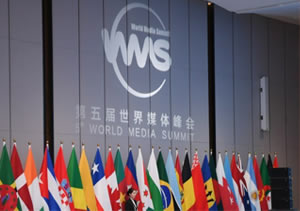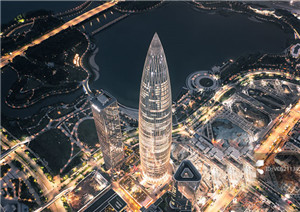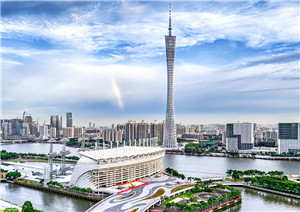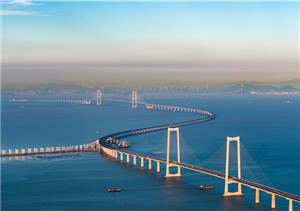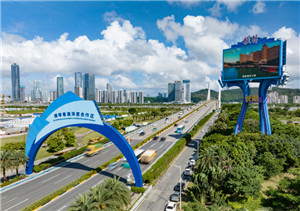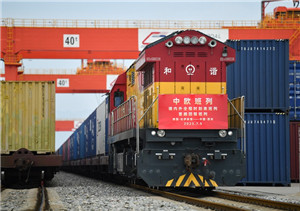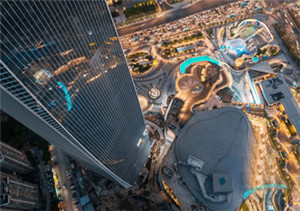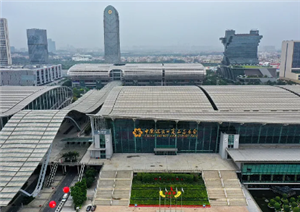As the capital of Guangdong province, Guangzhou sits at the lower reaches of the Pearl River in the province's south-central region. The sprawling metropolis spans an area of 7,434.4 sq km and serves as the political and cultural center of Guangdong.
North of both the Hong Kong and Macao special administrative regions, Guangzhou's location in the Pearl River Delta has long secured the city's position as the leading entry and exit shipping port of Chinese mainland, earning the city the title of China's "Southern Gateway".
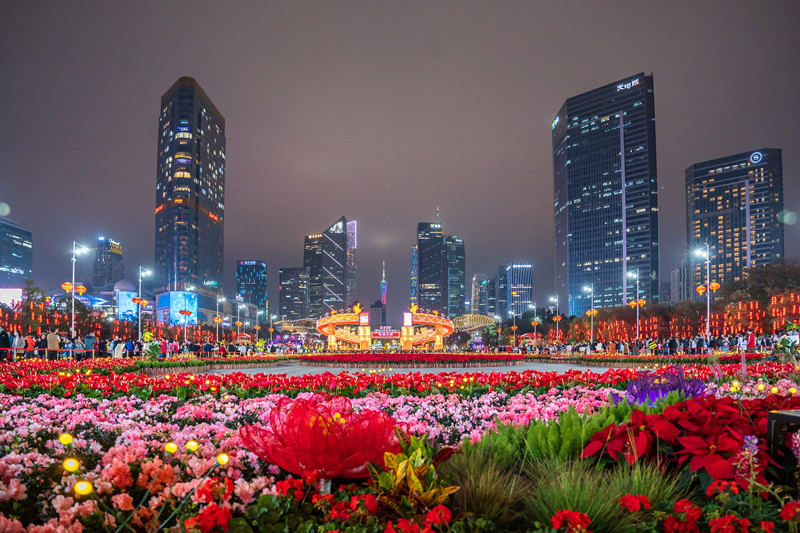
Night scenery of the Flower Market in Tianhe district [Photo/VCG]
Located in the South Asia Tropical Zone and nestled between both mountains and sea, Guangzhou experiences a typical monsoon-marine climate with warm temperatures, ample rain, low temperature differentials, extended summers and a short frost period. Winters in the city are cold and dry, while summers are hot, humid and wet.
The city's immensely developed infrastructure has made Guangzhou an important travel hub in the mainland. The Beijing-Guangzhou, Guangzhou-Shenzhen, Guangzhou-Maoming and Guangzhou-Meizhou-Shantou railway systems offer high-speed rail services capable of reaching all major cities across the whole of China in one day or less.
As one of the most developed industrial centers in China, Guangzhou is a mass distribution hub for both foreign and domestic goods.
At the end of 2023, Guangzhou housed a diverse population of 18.827 million people across its 11 districts. The city is well-known for its highly livable environment, topping the people's livelihood development index in China for two consecutive years.
With a rich history of over 2,230 years, Guangzhou has been recognized by the State Council as a National Famous Historic and Cultural City. Under the reign of Emperor Qinshihuang in 214 BC, the State of Qin conquered the region of Lingnan. The construction of Panyu town soon followed under the order of Nanhai Governor Ren Xiao. The town, commonly referred to as Renxiao town, is the first origins of what would later become a prosperous grand harbor of the Maritime Silk Road and the thriving metropolis of modern-day Guangzhou.
An ancient legend tells of five celestial beings descending upon Guangzhou riding five rams of differing colors. In the mouths of the rams were sheaves of rice. It is said the celestial beings bestowed the sheaves of rice to the people of Guangzhou so that the city would be forever free from famine. A sculpture of five rams currently stands in the city's Yuexiu Park, and along with this legend has earned Guangzhou the nickname "The City of Rams".
Hailed as the "Pearl on the Tropic of Cancer", Guangzhou is a hub connecting the Chinese mainland with the rest of the world. The city maintains trade links with more than 220 countries and regions around the globe. Guangzhou's Baiyun International Airport services 136 shipping routes across five continents on a daily basis. Guangzhou Port has opened 150 container shipment routes, trading with over 400 ports in more than 100 countries and regions worldwide, making the city a veritable beacon of open market trade on the 21st Century Maritime Silk Road.
To date, Guangzhou has established friendly relations with 106 international cities in 68 countries.
As to economic development, in 2023, Guangzhou's GDP reached 3,035.57 billion yuan ($422.722 billion). The city is currently home to 53 A-level tourism attractions, including two national 5A-level ones and 26 national 4A-level ones.
Chimelong Paradise, Xiangjiang Safari Park, the Guangzhou Zoo and the Baiyun Mountain Scenic Area offer stunning natural environments for leisure and relation away from the hustle and bustle of Guangzhou's busy streets. Luhu Golf Course, tennis and badminton on Shamian and Ersha Islands, numerous yoga clubs and the Total Fitness Club offer visitors many delightful ways to unwind and get some physical exercise.
Official website: https://www.gz.gov.cn/guangzhouinternational/index.html ;
http://www.eguangzhou.gov.cn/



